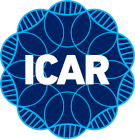Conclusions
Measuring CH4 emission on large numbers of cows is a challenge. The high costs and low throughput of RC restrict their use to research studies measuring CH4 emissions on small numbers of individual animals. Respiration chambers remain the gold standard method, but benchmarking alternative methods against RC is challenging because simultaneous replicate measures per cow are not feasible. Methods like SF6 and GreenFeed require lower capital investment and running costs than RC, and have higher throughput and potential for use in extensive and grazing situations, but costs are still prohibitive for recording large numbers of animals. Methods based on concentration are less precise and accurate than flux methods, but they are viable for large scale measurement, which is a prerequisite of genetic evaluations. Further development is needed to increase accuracy and precision of concentration methods. Several reviews of methods for measuring CH4 have made qualitative judgements based on individual comparison studies without expanding scope to genetic evaluations and considering repeated measure correlations between methods as proxies for genetic correlations. Results confirm that there is sufficient correlation between methods for all to be combined for international genetic studies and provide a much needed framework for comparing genetic correlations between methods should these be made available. Proxies have the potential to be used as predictors of CH4 production and emission. Although proxies are less accurate than direct CH4 measurements they can be easier, cheaper, and at high throughput, and may be therefore the best method in practical situations, especially proxies related to milk measurements. Therefore, these proxies at the population level, can provide useful information at genetic improvement that can be used to reduce emissions following 3 ways: (1) intensification of animal production; (2) improving of system efficiency and (3) the direct reduction of GHG emissions by breeding for reduced predicting animals that are high or low GHG emitters.
